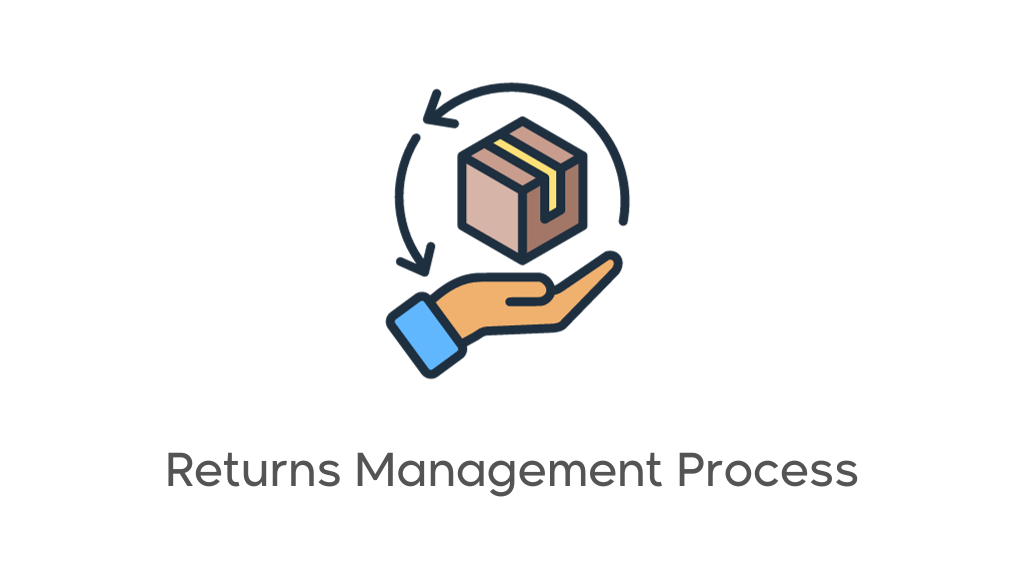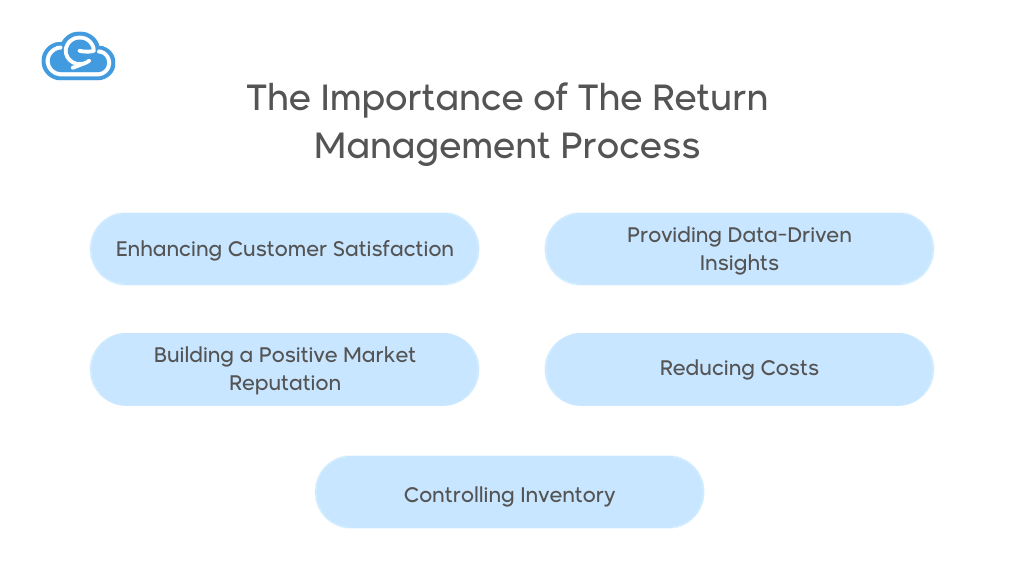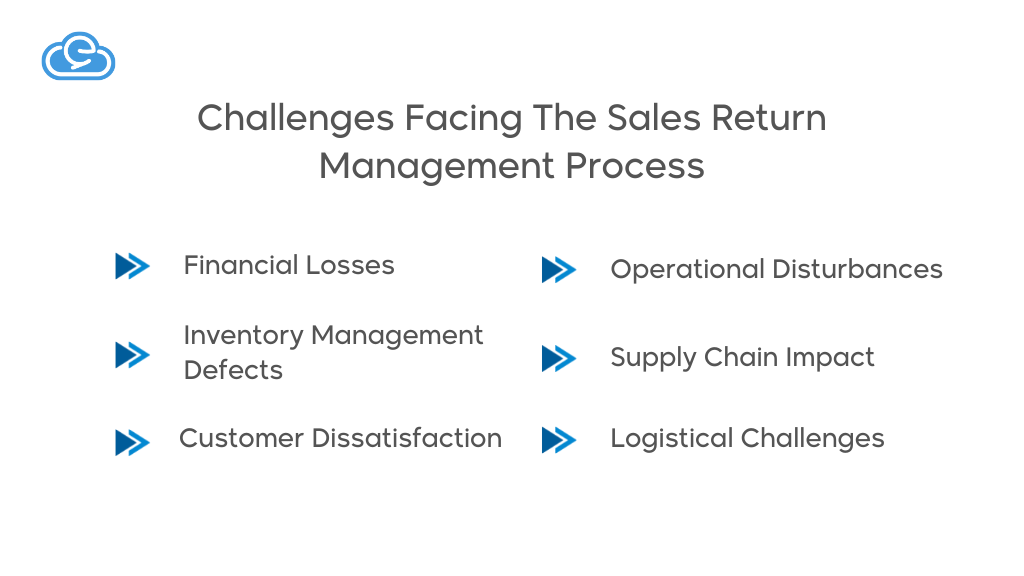Refining Customer Satisfaction via Return Management Process
8 Reading minutes
In the vast landscape of retail, the return management process stands as a significant challenge, with far-reaching implications for businesses.
According to the National Retail Federation (NRF), the value of retail trade returns in America surpassed $800 billion in 2022, emphasizing the substantial impact of this often-overlooked aspect of commerce.
Return management isn’t just a procedural task; it’s a nuanced area that directly affects customer satisfaction, brand reputation, and the financial stability of businesses.
This article seeks to demystify the complexities surrounding return management, offering practical insights for businesses aiming to handle returns efficiently and strategically reduce their frequency.
We’ll explore the measured strategies and tactics that businesses can employ to navigate the landscape of return management without unnecessary excitement.
What is the Return Management Process?
Return management refers to the systematic handling of product returns in the retail or e-commerce sectors.
It involves the processes and strategies a business implements to streamline the return of products from customers, ensuring a smooth and efficient system.
The Importance of The Return Management Process

Effective management of sales returns is essential to maintaining an organization’s success, and its importance is evident in:
Enhancing Customer Satisfaction
A well-managed return process is a crucial component of customer satisfaction. Providing a hassle-free return experience builds trust and loyalty among customers. This positive interaction can lead to repeat business and positive word-of-mouth.
Building a Positive Market Reputation
An efficient return management process contributes to a positive brand image. Customers appreciate businesses that handle returns with professionalism and speed. This positive reputation can be a competitive advantage in the market.
Providing Data-Driven Insights
Return data offers valuable insights into customer behavior, product quality, and inventory management.
Analyzing this data enables businesses to make informed decisions, refine product offerings, and improve overall operations.
Reducing Costs
While returns are inevitable, managing them effectively can help minimize associated costs. This includes restocking, shipping, and processing expenses.
A streamlined return management process contributes to cost reduction and increased profitability.
Controlling Inventory
Efficient return management is essential for maintaining accurate inventory levels. By promptly processing returns and updating inventory, businesses can avoid stockouts, overstock situations, and the associated financial losses.
How to Manage Sales Return Effectively
Effective management of customer returns requires the implementation of some basic steps, the most prominent of which are:
Establishing a Clear Return Policy
A well-defined return policy sets expectations for both customers and the business. Clearly communicate terms such as return windows, acceptable conditions, and refund processes. This transparency reduces confusion and improves customer satisfaction.
Offering Multiple Communication Channels
Offering various communication channels for return inquiries, such as email, phone, and live chat, ensures that customers can easily reach out for assistance. Quick and helpful responses can mitigate dissatisfaction and encourage loyalty.
Providing Technological Tools for Return Management
Investing in technological solutions can automate and streamline the return management process. Utilize software that enables efficient tracking, processing, and analysis of return data.
Initiating the Evaluation of Returns
Implement a system for the initial evaluation of returns to determine their eligibility for a refund or exchange. This step helps in identifying fraudulent returns and ensures that only valid returns are processed.
Checking and Assessing Returns
Thoroughly inspect the returned items to assess their condition. This step is crucial for deciding whether products can be restocked, refurbished, or need to be disposed of.
Recording Return Data
Maintain detailed records of return data. This information is valuable for analyzing trends, identifying recurring issues, and making informed business decisions.
Processing Refunds or Exchanges Promptly
A prompt refund or exchange process is key to customer satisfaction. Delayed resolutions can lead to frustration and negatively impact the customer’s perception of the business.
Monitoring Supplier and Vendor Performance
Regularly evaluate the performance of suppliers and vendors to address and rectify issues that contribute to returns. Collaborative efforts can enhance product quality and reduce return rates.
Educating Customers
Proactively educate customers about product features, sizing, and return policies. Clear and comprehensive product information can help reduce returns caused by misunderstandings or dissatisfaction.
Monitoring and Controlling Return Policies
Regularly review and update return policies to align with business goals and industry standards. This ensures that policies remain fair, transparent, and effective in addressing customer needs.
Reasons for the Increase in Return
There are many situations in which a customer needs to return a product, the most prominent of which are:
Product Defects or Damage
Defective or damaged products are a common cause of return. Implement stringent quality control measures to minimize the occurrence of such issues.
Dissatisfaction with the Quality of the Product
Clearly communicate the quality of products through accurate product descriptions and visuals. This can help manage customer expectations and reduce dissatisfaction.
Receiving an Incorrect Product
Errors in order fulfillment can lead to customers receiving the wrong products. Implement robust order verification processes to minimize such mistakes.
Change of Opinion or Buyer’s Remorse
Some returns occur due to customers changing their minds after making a purchase. Providing detailed product information and setting clear expectations can help reduce returns for this reason.
Accidentally Duplicate Purchases
Implement features on your platform to prevent accidental duplicate purchases, such as order confirmation pop-ups or reminders.
Sizing or Fit Issues
Provide detailed sizing information, including measurements and fit guides, to help customers make informed decisions about their purchases.
Inaccurate Product Descriptions
Ensure that product descriptions are accurate and reflective of the actual product. Misleading information can result in dissatisfaction and return.
Late Delivery
Timely delivery is crucial to preventing returns caused by late deliveries. Optimize your logistics and supply chain to meet delivery timelines.
Unresolved Customer Complaints
Address and resolve customer complaints promptly to prevent them from resorting to returning as a solution to their issues.
Challenges Facing The Sales Return Management Process

Returns pose many challenges that affect many aspects of the organization, the most prominent of which are:
Financial Losses
Returns can result in financial losses due to restocking, processing, and shipping expenses. An efficient return management process is essential to mitigating these losses.
Inventory Management Defects
Inaccurate inventory management can lead to stockouts or overstock situations, impacting the overall efficiency of the business.
Customer Dissatisfaction
A poorly managed return process can lead to customer dissatisfaction, damaging the brand’s reputation and customer loyalty.
Operational Disturbances
Return management processing can disrupt daily operations. Streamlining the process is necessary to minimize operational disturbances.
Supply Chain Impact
Excessive returns can disrupt the supply chain, affecting the availability of products and overall business performance.
Logistical Challenges
Handling returns involves logistical challenges, such as reverse logistics and transportation. Addressing these challenges is crucial for a smooth return process.
Top Tips for Reducing Returns
Reducing returns is certainly a critical goal for businesses looking to improve their bottom lines and customer satisfaction. Here are 6 tips that companies should consider implementing to reduce sales returns:
Improving Product Quality and Testing
Investing in stringent quality control measures during manufacturing stands as a crucial step in minimizing returns, with product quality often serving as an unseen trigger for frequent return incidents.
This proactive approach ensures the identification and resolution of any latent defects or shortcomings, guaranteeing that the product aligns with or surpasses customer expectations upon delivery.
Providing an Accurate Description of the Product
The accuracy of product descriptions and marketing materials plays a pivotal role in shaping customer expectations and, consequently, the rate of return.
It is imperative for businesses to ensure that product descriptions, specifications, and images are not only truthful but also devoid of exaggeration or misleading claims.
To minimize size-related returns, businesses should provide comprehensive sizing charts that offer precise measurements. Beyond mere numerical data, including fitting guidance and recommendations can be instrumental in assisting customers to make informed decisions about their purchases.
Implementing Clear Return Policies
Establishing transparent return policies is a fundamental necessity to ensure a clear and understandable framework for customers.
By providing explicit details regarding return periods, conditions, and the procedures for refunds or exchanges, businesses enable customers to make informed decisions about their purchases.
This clarity not only enhances customer understanding but also facilitates the professional return management process, allowing for a smoother and more efficient process.
Prioritizing Customer Service
In the operational framework, it is imperative to allocate specialized personnel dedicated to promptly addressing customer questions, inquiries, and concerns.
This strategic deployment not only plays a pivotal role in diminishing return rates but also elevates the overall satisfaction levels of customers with the service rendered. Hence, it is paramount not to underestimate the significance of this aspect.
Showing Real Pictures and Videos of the Product
Ensure the inclusion of top-notch photographs and videos that comprehensively showcase the product from various perspectives and in diverse settings.
By incorporating high-quality visuals, potential customers gain a comprehensive understanding of the product’s appearance and attributes.
Implementing Automated Systems
Leveraging cutting-edge technology and sophisticated software is paramount to the efficient management of sales returns.
This involves the strategic implementation of automated systems, particularly through Enterprise Resource Planning (ERP) programs, to navigate the complexities of the return management process seamlessly.
Automation in the context of return management encompasses the refinement of assessment and processing procedures. This entails the precise recording and documentation of crucial customer information and details related to returned products.
Manage Sales Return Efficiently with “Edara“
“Edara” is an integrated ERP program designed to streamline and optimize the return management process.
Facilitating Return
“Edara” offers a practical solution for businesses looking to navigate returns with ease. This platform allows you to identify returns effortlessly using parameters like reference numbers, document numbers, or item serial numbers.
By leveraging “Edara,” businesses can implement a straightforward approach to the return management process. The platform’s functionality simplifies the process, making it more accessible for both customers and internal teams.
Whether it’s tracking returns through a reference number, document number, or item serial number, “Edara” ensures a methodical and efficient return workflow, contributing to a more manageable overall process.
Reducing Human Error in Recording Returns
The potential for human error in recording transactions can be a significant operational challenge. “Edara,” our integrated ERP program, serves as a solution designed to curtail these errors, particularly when dealing with returns involving a larger quantity of sold items.
Moreover, “Edara” goes a step further by incorporating a feature that acts as a safeguard against repeated returns by mistake.
This not only streamlines the return management process but also safeguards businesses from unnecessary complications arising from unintentional duplicate return requests.
Creating Various Reports
With “Edara,” the capability to craft tailored reports empowers you to obtain a comprehensive understanding of both return rates and customer behavior effortlessly.
This cutting-edge feature allows you to create a real-time vision of these critical metrics with just a click of a button, offering an unprecedented level of accuracy and detail.
In a click-driven environment, “Edara” transforms raw data into actionable intelligence, allowing businesses to respond proactively to market dynamics.
Tracking Operations in Real Time
“Edara” operates on a cloud system, allowing users to access it from any device at any time. This feature enables real-time tracking of return details without the necessity of being physically present in the office.
The cloud-based functionality provides a practical and straightforward approach to monitoring return operations, offering flexibility across various devices without the need for an exuberant physical presence.
Processing Requests Accurately
“Edara” plays a pivotal role in enhancing the precision of order processing by minimizing reliance on the human factor for order entry and fulfillment.
This reduction in human involvement substantially decreases the likelihood of customers receiving incorrect items, a prevalent cause of returns in the retail and e-commerce landscape.
The accuracy afforded by “Edara” stems from its advanced capabilities in automating and optimizing the order fulfillment process.
Ensuring Compliance and Documentation
“Edara” ensures adherence to return policies, warranties, and regulations by maintaining accurate records.
This software is integral for resolving returns efficiently within legal frameworks, providing a streamlined approach to compliance and documentation in the sales returns process.
Its incorporation enhances efficiency and accuracy, offering businesses a reliable tool for maintaining transparency and accountability.
Conclusion
An effective return management process is a crucial element that significantly influences the overall success of your business, impacting vital aspects like inventory, accounts, and the supply chain. Consequently, it becomes imperative to prioritize returns and establish a systematic approach to address them.
In terms of minimizing return rates, it is essential to prioritize product quality, enforce transparent return policies, and invest in accounting software capable of meticulously tracking return details.
These measures empower businesses to make informed decisions based on return data. This is precisely what “Edara” offers.
Feel free to reach out to us to discover more about the program and its capabilities.
Related articles
Understanding Omnichannel Commerce: A Comprehensive Guide
Imagine a shopping experience where customers feel like they’re interacting with a single, perfectly synchronized brand, no matter where they engage. This is the power of omnichannel commerce. By seamlessly…
Optimizing Purchasing Management and How “Edara” Helps?
While your growing company delivers excellence, purchasing management challenges are emerging as demand rises. Timely resource acquisition at competitive prices is becoming critical to maintain operations. The key to success…
The importance of controlling user permissions
A routine financial review turned alarming when Mr. Ahmed, the accounting manager, discovered unauthorized changes to sales data by a team member who shouldn't have had access privileges. This breach…


